
Teleborg Water Tower
Removed from Unnamed collection



+ 2

Source: Sam Zoon Images may be subject to copyright. Learn More
It's quite amusing that the fascinating features of the Teleborg Water Tower weren't discovered until after it was built. Now, it serves as a charming, offbeat tourist spot. The tower's unique vault construction creates an incredible echo under the dome, amplifying even the tiniest whisper or squeal into something extraordinary. Whether you're tossing pebbles, shouting, or simply laughing, you're guaranteed a good time. It's a blast for both the young and the young at heart.
The water tower is conveniently located just outside Teleborg, a short drive or bus ride from town. If you're feeling adventurous and the weather is nice, why not take a leisurely walk? You'll get the chance to enjoy some of Växjö's stunning lakes along the way. This small detour makes for a perfect blend of nature and quirky architecture. Plus, the surrounding area is dotted with charming cafes where you can grab a coffee and soak in the local vibe.
You may also be interested:
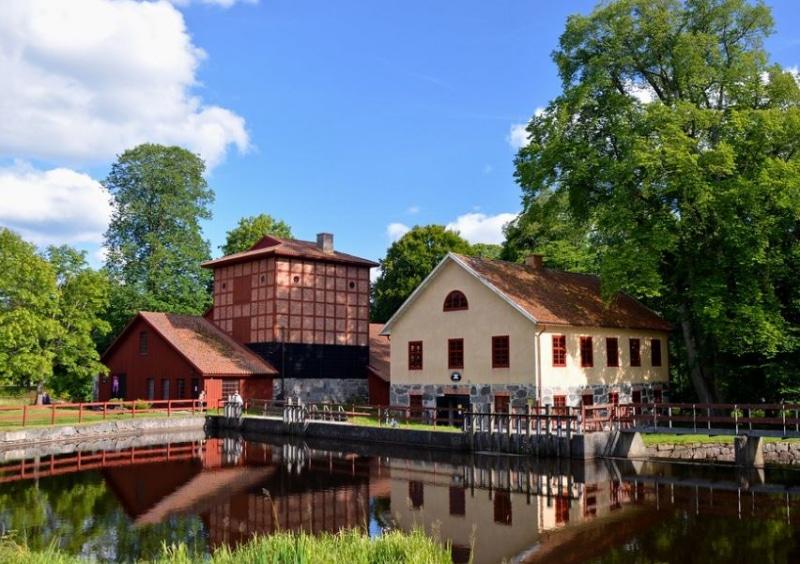
Removed from Unnamed collection
Huseby Bruk 
Beautiful Huseby Bruk offers a delightful glimpse into a bygone era. Take a leisurely stroll through the lush park and enchanting gardens, and don't miss a visit to the well-preserved castle. At the old ironworks, stories of the 1800s come alive, weaving tales of industry and innovation. The heart of Huseby, often affectionately called the castle, holds the legacy of Ms. Stephens, its last owner. In her will, she expressed a heartfelt wish to preserve everything for future generations. The interior decor has been meticulously maintained, with much of it reflecting the style from her parents' time up to the mid-1800s. The Stephens family shared a close connection with the royal house, and the estate occasionally hosted royal visitors, adding a touch of grandeur to its history. The park and garden have been lovingly restored to their 19th-century glory. Thanks to detailed documentation, including shopping lists for seeds, the gardens flourish with 'embroidered' flower beds originally designed by Miss Stephens’s mother, Elisabeth Stephens. However, the kitchen garden might just steal the spotlight. It's a true working garden, historically providing the estate's gentry with fresh vegetables, fruits, and berries. Designed with nine distinct areas, it follows an age-old model. Ms. Stephens had a fondness for different breeds of hens, and today you can still spot hens and peacocks wandering about, adding a lively touch to the serene landscape. Huseby Bruk is more than just a historical site; it's a living testament to the past. The estate occasionally hosts special events and workshops, where visitors can learn traditional crafts or enjoy a picnic on the manicured lawns. It's an ideal spot for history enthusiasts and nature lovers alike, promising a day filled with discovery and relaxation.
Map

Removed from Unnamed collection
Smalands Museum 
Welcome to Smålands Museum, Sweden's oldest provincial treasure trove, with collections that date all the way back to 1792. The museum's claim to global fame is its remarkable glass collection. In 1996, Smålands Museum reopened as Sweden's premier glass museum after undergoing a major facelift and expansion. The cultural heritage of Småland and the rich history of Kronoberg County are deeply intertwined with the legacy of its rural industrial estates, which now primarily focus on glass production. The museum takes on the significant role of collecting, documenting, and showcasing Swedish glass and its craftsmanship. A visit here is like stepping into a kaleidoscope of history and artistry. The museum's glass exhibits are nothing short of mesmerizing, with pieces that range from delicate, intricate designs to bold, modern creations. You can almost feel the stories of the artisans who poured their hearts into every piece. It's a place where you can lose yourself in the beauty of Swedish glass art, whether you're an art aficionado or a curious traveler. Plus, don't miss the chance to explore the charming town of Växjö, where the museum is located. It's a delightful blend of old-world charm and contemporary culture, offering cozy cafes and scenic walks.
Map
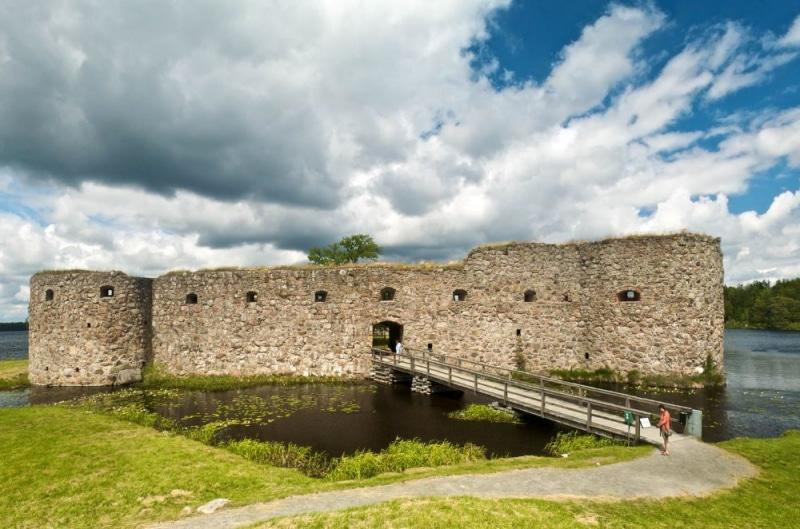
Removed from Unnamed collection
Kronoberg Castle Ruin 
Kronobergs Slott is a stunning medieval castle ruin that sits gracefully on an island in Lake Helgasjön. Just a short 5-kilometer journey north of Växjö, the provincial capital, you'll find this historical gem. The story of Kronobergs Slott began around 1444 when Bishop Lars Mikaelsson decided to build a fortified residence for the bishops of Växjö. Fast forward to the Dacke War of 1542-43, and this castle became the heart of a farmers' rebellion led by Nils Dacke, a national hero in the Småland region. The farmers bravely stood against the forces of Swedish King Gustav Vasa. For the next two centuries, Kronobergs Slott found itself caught in the crossfire of military conflicts. Its role as a border fortification between Sweden and the former Danish provinces of Skåne and Blekinge made it a prime target. Danish troops burned it down at least twice, but like a phoenix, it rose from the ashes, each time slightly larger than before. The castle we see today, with its rectangular layout and four round corner towers, is the result of its last reconstruction in 1616. However, once the Danish provinces became part of Sweden in 1658, Kronobergs Slott lost its strategic importance. By the end of the 17th century, it was abandoned and left to ruin, eventually serving as a temporary quarry for nearby Växjö's building projects. While exploring the ruins, you'll feel the whispers of history in the air, the stories of battles and resilience echoing through the stones. The surrounding landscape is a haven for nature lovers, offering serene walking trails and the chance to spot local wildlife. Whether you're a history buff or just looking to soak in some Swedish culture, Kronobergs Slott is a must-visit.
Map
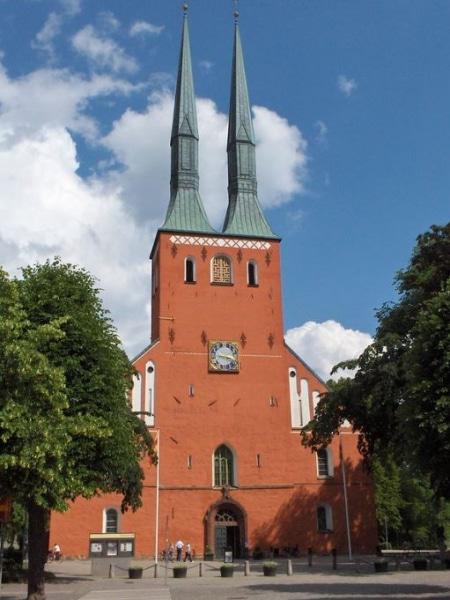
Removed from Unnamed collection
Vaxjo Cathedral 
Växjö Domkyrka, the cathedral nestled in the heart of Växjö, is the flagship church of the Diocese of Växjö. You’ll find it standing proudly at the edge of the city's bustling center. This architectural gem, with its distinctive double tower spires, is rooted in history dating back to the 15th century. Yet, as you wander through its awe-inspiring structure, you'll encounter fragments from as far back as the 12th century. The story of Växjö Domkyrka begins with a humble wooden church in the 11th century. Legend has it that Saint Sigfrid, a missionary who later became a saint, was the visionary behind its establishment. The Diocese of Växjö came into being around 1170, ushering in the construction of a cathedral fit for the new bishop's seat. This inaugural cathedral was crafted from natural stone, showcasing a Romanesque design. It featured a single nave, a narrow chancel with a semicircular apse, and an imposing tower. Remarkably, remnants of the ancient foundations, a few pillars in the main nave, and sections of the masonry in the lower part of the church tower have stood the test of time, offering a tangible link to the past. While you're exploring Växjö, take a moment to appreciate the surrounding area. The city is dotted with charming cafes where you can savor a traditional Swedish fika, a delightful coffee break that Swedes hold dear. Plus, Växjö is known for its commitment to sustainability and green living, making it an inspiring place to visit for those who care about the environment.
Map
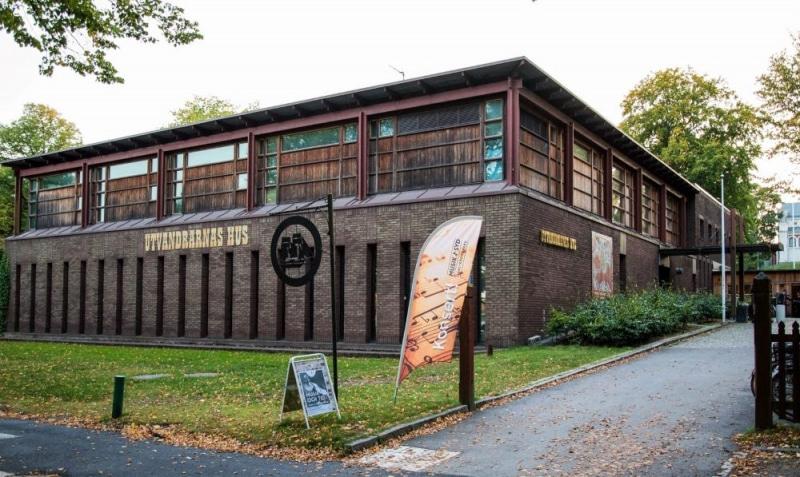
Removed from Unnamed collection
Emigration Museum 
Nestled just a stone's throw from Småland's provincial museum in Växjö, Utvandrarnas Hus offers a fascinating glimpse into the great Swedish emigration waves from 1846 to 1930. It's a unique museum, entirely devoted to this significant chapter of Swedish history. Believe it or not, a century and a half ago, Sweden was among the poorest regions in Europe. Before the first industrial revolution, which arrived relatively late in Sweden, it was a largely agricultural nation. With limited arable land, it struggled to sustain its rapidly growing population in the mid-19th century. Established in 1965 by the Swedish Emigration Institute, the museum houses an extensive archive dedicated to the emigration era. This collection is thoughtfully curated in a centralized location, making it easily accessible to the public. Alongside this, the institute has opened a research department that has become a go-to hub for ancestry and immigration researchers. It's a treasure trove for anyone tracing their roots or exploring the broader narratives of migration. Växjö itself is a charming city worth exploring. Known as the "Greenest City in Europe," it offers plenty of eco-friendly adventures. From its lush parks to the serene beauty of Lake Växjö, there's a tranquil vibe that complements the rich history found in Utvandrarnas Hus. A stroll through its cobblestone streets is like stepping back in time, yet the city buzzes with modern energy.
Map
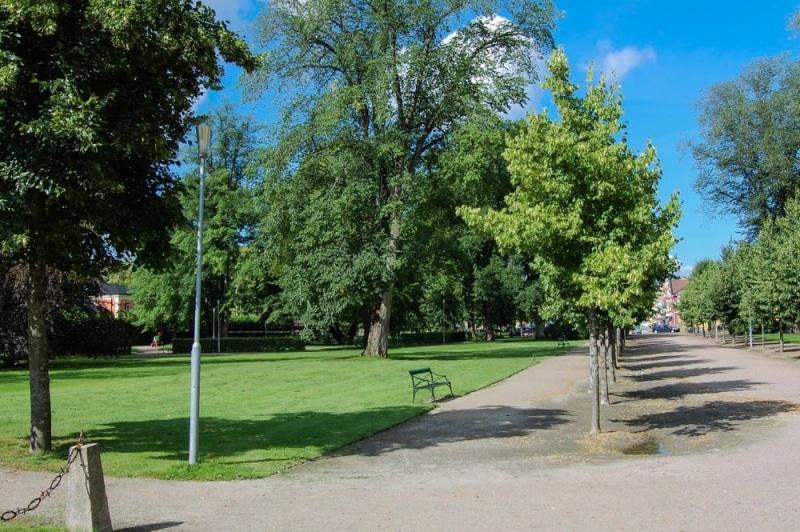
Removed from Unnamed collection
Linneparken 
Nestled right next to the stunning cathedral in the heart of Växjö, Linnéparken is a real gem that forms part of the city's expansive parkland. This delightful park stretches along the tranquil shores of Lake Växjösjön and offers a diverse experience with its three distinct areas. There's an English-style garden with meandering paths and grand old trees that invite you to wander at your own pace. Then there's the modern section, perfect for relaxation, with its open green spaces, playful playgrounds, and serene water features. If you fancy something more traditional, the classic formal park offers that timeless elegance. A significant part of Linnéparken pays homage to the legendary botanist Carl von Linné. Born in Råshult, Småland in 1707, Linné was once a student at Karolinerhuset, located in the park's northern section near the cathedral. His ground-breaking work at Uppsala University, where he devised the Latin naming system for plants and animals, remains a cornerstone of biology today. The park's plantings beautifully demonstrate Linné's classification system, showcasing 24 different plant classes. Each year, Linnéparken surprises visitors with a fresh plant theme, and you can always find the cactus garden, flower-lined paths, and various shrubs adding vibrant colors to the landscape. There's even an open-air stage where performances add a lively touch to the serene surroundings. It's a place where history and nature blend seamlessly, offering a unique experience for anyone who visits. Don't miss the chance to explore this botanical haven and maybe even catch a local event or performance while you're there.
Map
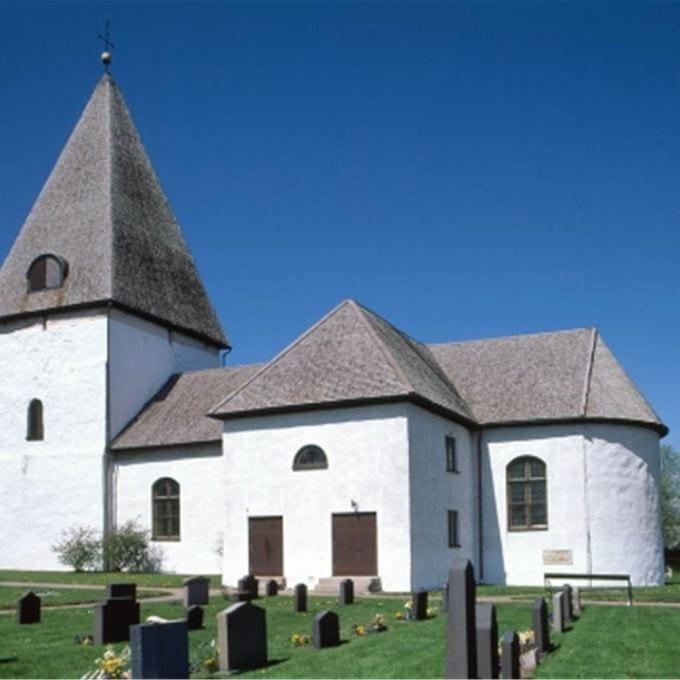
Removed from Unnamed collection
Bergunda Church 
Nestled in the picturesque landscapes of Sweden, Bergunda Church is a remarkable blend of history and architectural evolution. Originally constructed in the late 12th century, this Romanesque church has been a silent witness to centuries of change. Initially, it stood without a tower. That feature was added in the 16th century, serving as a defense against the Danes whose front was nearby. The church's current appearance owes much to an extensive renovation undertaken between 1825 and 1826. During this time, both the interior and exterior underwent significant transformation. The oldest part, the longhouse, is a testament to the church's medieval origins. The expansion in the early 19th century brought about the addition of the choir, a sacristy wing, and a special balcony known as "the count's balcony." This balcony was designed specifically for the owners of the nearby Bergkvara Castle, offering them a prime spot during services. Even today, the name "the count's balcony" evokes a sense of aristocratic history. Inside, the church houses several treasures gifted by Bergkvara, including the pulpit, altarpiece, altar cloth, and chasuble. Until 1921, the count of Bergkvara held the advowson, granting him the right to appoint the church's priest. This historical tidbit adds a layer of intrigue to the church's past. Bergunda Church is not just a place of worship. It's a portal to another time, where each stone and artifact tells a story. If you're planning a visit, take a moment to appreciate the blend of Swedish and Danish history that this site represents. Not far from the church, you can explore the scenic beauty of the surrounding countryside, which offers a perfect backdrop for reflection and exploration.
Map
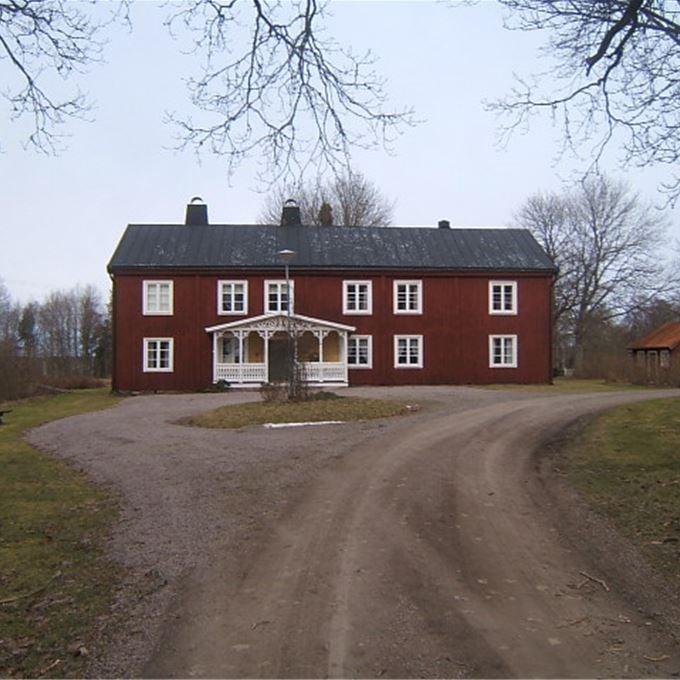
Removed from Unnamed collection
Daedesjoe local History Museum 
In the charming and historic farm of Dädesjö, you'll discover a fascinating collection of traditional textiles, cobblery, and even prehistoric artifacts. This place is a treasure trove for anyone curious about the past. Flax thrives in Dädesjö, where you can witness both time-honored and contemporary linen production techniques. It's a unique opportunity to see how this ancient craft has evolved over the years. Nestled in the heart of Växjö, this local history museum offers a window into the region's rich cultural heritage. The museum's displays are a delightful blend of the past and present, providing insight into the area's history and its ongoing traditions. Whether you're a history buff or simply someone who appreciates beautiful textiles, this place is a must-visit. With its serene countryside setting, it's also a lovely spot to unwind and soak up the natural beauty of the Swedish landscape.
Map
 Sam Zoon
Sam Zoon 
 Sweden
Sweden